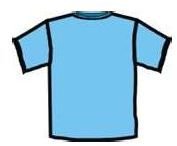Elementary Grade Book Review Activities and Projects
Balloon Activities!
What do balloons have to do with elementary grade book review activities? Young children love buzz words and, as in many cases, this was a phrase initiated by the children themselves.
The review activities are written on balloon-shaped cards with strings attached from them to a clown’s hand - hence the name “Balloon Activities”! The students regard them as a fun way to tell about their books and are eager to show and tell their reviews.
The activities are introduced early in the year and they can be used to review any book. The book may be one that is shared in class, one that a student has read individually, or one they shared with a friend.
Make Picture Frames
Picture frames are easy to construct and can be used by students of all ability levels. Provide sheets of paper with a large empty picture frame. The rectangle in the middle for the illustration and the four sides of the frame for the writing. Across the top of the frame the student will print the title of the book that is under review and the author. On the side panels a drawing, or written names, of the main characters. Across the bottom section of the frame the student writes or illustrates the setting of the story. In the ‘picture rectangle’ the student illustrates their favorite part of the story.
Assessment:
- Observation of students during the writing activity.
- Did the student use capital letters for the character names?
- Did the student relate the information to the book?
T-Shirts
Provide students with a template for a simple T-shirt. Invite the students to draw around the template on folded newsprint and cut out two copies of the shirt.
- Around the neck of the shirt students print the title and author of the book.
- Across the front of the shirt tell about something that happened in the book.
- Across the back of the shirt draw a picture of your favorite part of the book.
Staple the shirt at the shoulders, place over the child’s head and then staple the sides. The student is then a living poster board for the book!
Assessment:
- Did the student share interesting information about the book?
- Was the favorite part relevant to the book?
Story Necklace
Provide small pieces of light card approx. 4 cms x 6 cms (2" x 2 1/2") with two holes punched into the top of each one. Depending on the ability of the students distribute four, five, or six cards and invite them to make a picture and print a sentence on each card. On the first card print the title and author of the book. On the next card ask them to print and illustrate something that happened at the beginning of the book. On the next card tell what happened next. How did the story end?
When the cards are complete thread them on to a pipe cleaner and add enough wool to each end so that the necklace can be loosely tied around the student’s neck. (Using a pipecleaner makes for a sturdier base for the necklace rather than wool or thread).
Assessment:
- Did the student recognize the correct sequence?
- Did the student understand the ‘beginning’, ‘middle’ and ’end’?
Wristwatch or Bracelet
Provide light card cut-outs in the shape of a watch. Add a ‘flap’ with tape or a staple. Invite students to print the title and author on the top of the flap. On the ‘watch face’ ask them to draw a picture of their favorite part of the story. On the ‘strap’ parts they should tell about the setting of the story, the main characters, and one problem that had to be solved.
When complete add some wool so that the student may wear it as a watch or bracelet.
Assessment:
- Did the student choose words suitable to grade level?
- Did the student use words to share feelings about the problem?
Character Web
Provide students with papers with spider webs on them. In the center print the author and title and the name of a character chosen from that book. In each section of the web print a characteristic of that character. Give students some ideas to get them started. Is the character male or female? Is the character kind or mean?
Assessment:
- Did the student understand the concept of characteristics?
- Did the student use interesting words?
- Did the student choose words to help the reader see the character?
Elementary grade book reviews can be varied and fun for the students. Display their work to brighten up the room.
